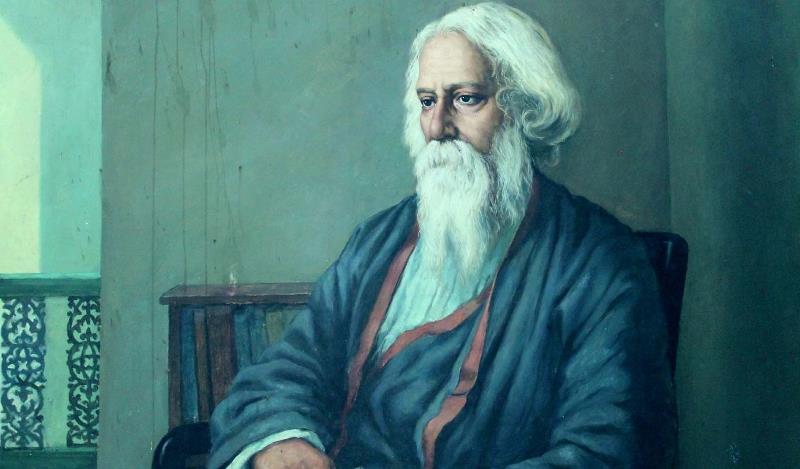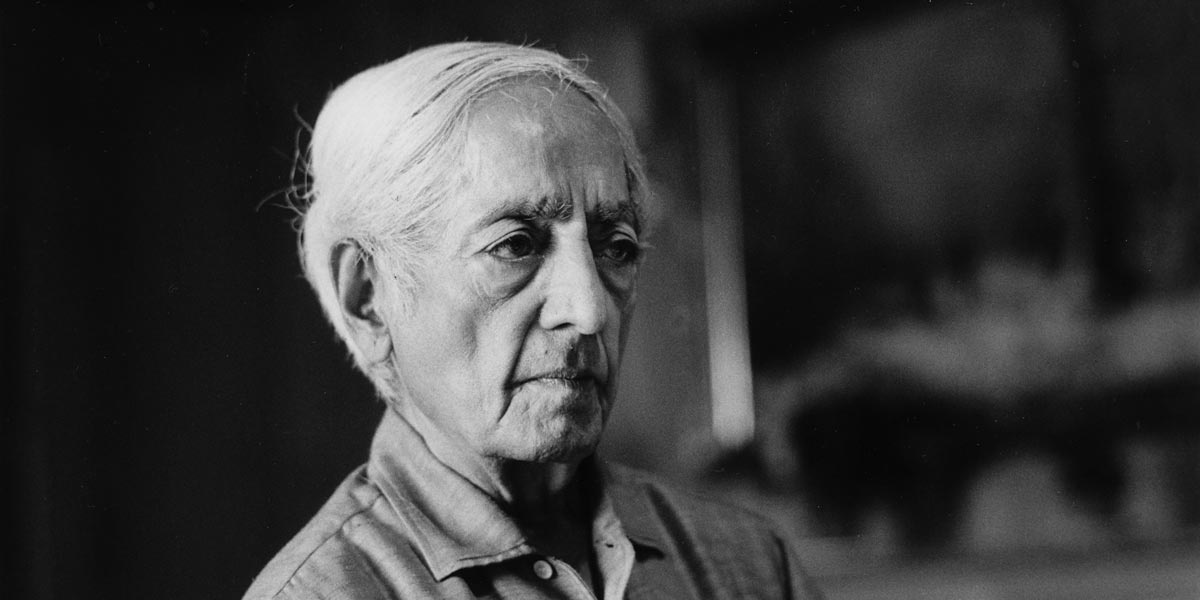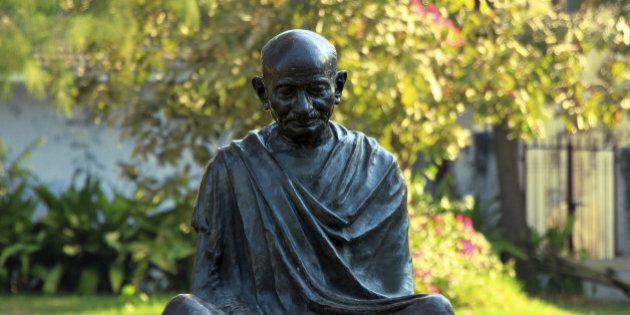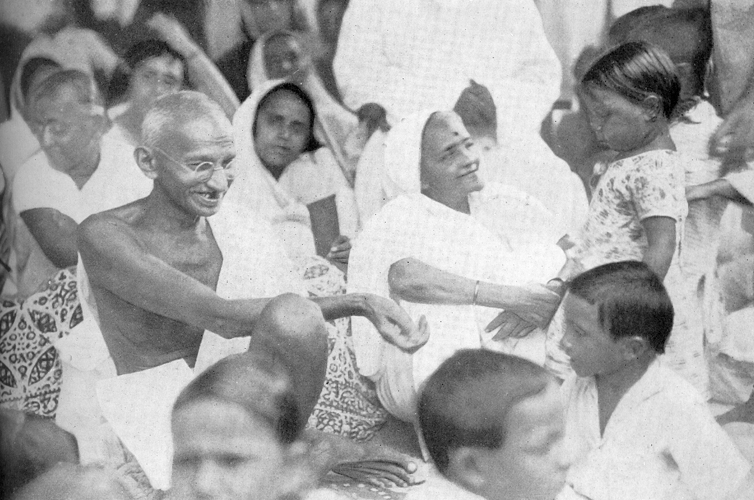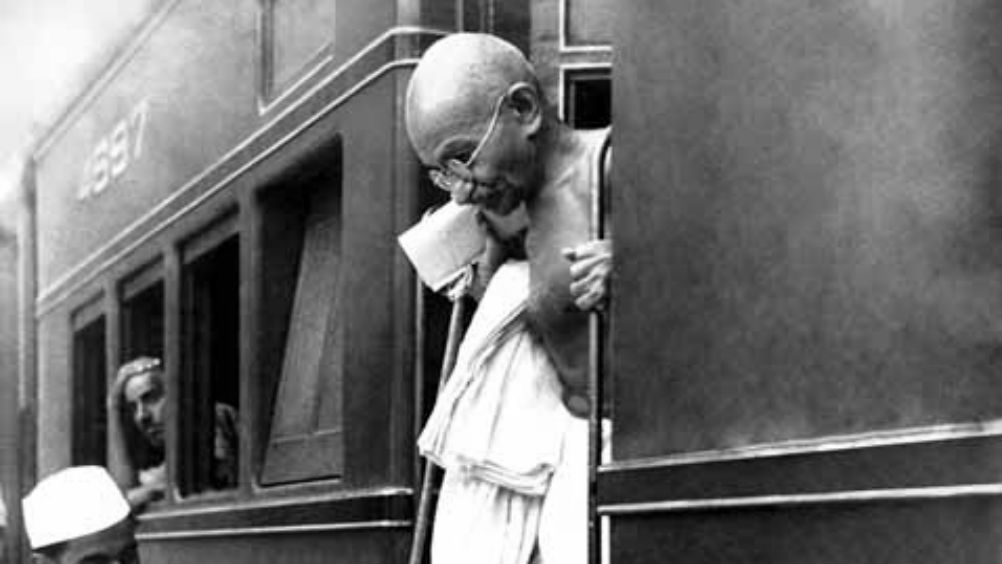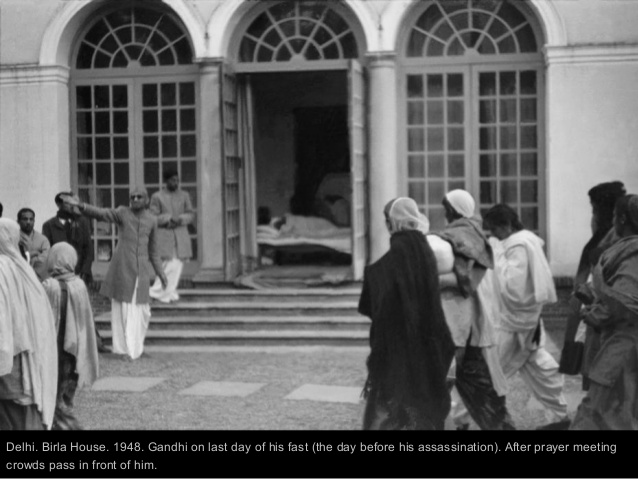In 1908, the poet Rabindranath Tagore suffered what was perhaps the biggest emotional blow of his life, when his eleven-year-old son, Shamindra (“Shami”), died of cholera. He had lost a daughter before—a most unusual little girl called Renuka—but it appears that he was hit harder by the death of his son. One can recount the reasons given by Rabindranath‟s biographers to explain this fact, or speculate as to further reasons, but one needn‟t for present purposes. Shami‟s death was the last of the shocks that the poet received in the first decade of the twentieth century. It also appears to have served as the catalyst for one of the most creative phases of his life. The poems that eventually went into the English Gitanjali were written around this time, as were the extraordinary essays and addresses collected in the Bengali text called Śāntiniketan. There is broad agreement among Tagore scholars that close encounters with death, and the suffering that it brought on fuelled his best writing, his mettle (or metal, as Plato might have said) forged and burnished by the steady flame of grief. Not much of Śāntiniketan has been translated. Its text consists of philosophical musings and characteristically intimate explorations of the relationship of human beings with one another, with physical nature, and with God. It is Rabindranath‟s first sustained attempt to fashion for himself a philosophical perspective on life, art, and education, among other things. It will help to remember that what is now the Patha Bhavana School at Santiniketan came into existence in 1901, with the poet as its central figure. Some essays in the text of which I speak were written as addresses or sermons that he gave before the children of that school. It is unlikely that the children understood all of what he said, but then for Rabindranath understanding is not a function of reasoning or the intellect alone; we experience the world with all our being— body, mind, and heart.
This idea, associated both with Romantic thought and Progressivism in education, is one of Rabindranath‟s basic assumptions about human beings. Something that occasionally shines through these sermons is a certain poignant urgency on the poet‟s part to tend to the moral, aesthetic and spiritual needs of the children of others. The sermons‟ content and tenor also reveal the utter seriousness with which he regarded children as persons. When speaking of artistic or spiritual aspiration, he accords them equal agency as himself, never once talking down or making things seem easier than they are for anyone with a commitment to her own being. No doubt their teachers were listening, for they too were members of the Santiniketan Asrama. But the sermons do not appear to be principally for those adults, whereas several are clearly directed at the pupils.
The years 1908-1913 saw the serialized publication of Śāntiniketan. During this period, the poet‟s religious convictions appear to have undergone significant modification. Aside from his art, Rabindranath‟s faith was perhaps his most enduring possession, and, to the present author, one of his most interesting commitments overall, given how smoothly it translates into a secular philosophy of life. His fealty to the core of the Upaniṣadic doctrine was never in doubt: he was raised within the Brahmo Samaj, a community of theistic Hindus who aligned their faith to non-dualistic or Advaita Vedanta. But he was a Brahmo like no other. His particular theistic attitude rested upon a combination of strong personal discipline and an ability to knit together distinct religious outlooks into a coherent picture. The text of Śāntiniketan suggests that he used scripture to think through his beliefs in light of the experience that he had amassed in his forty-seven odd years. His endless embroidery on the first verse of the Īśā Upanisad or the Gāyatrī, and sudden insights into passages of the New Testament, and the poetry of northern and eastern India‟s saintly minstrels appear in the flow of his own thought, adding both momentum and depth to them. Rabindranath enthusiastically tacked on the ethico-spiritual injunctions of Early Buddhism to Advaita, producing a lumpy though generally agreeable quilt-work of religious precepts and maxims with a recognisably humanist character. Humanism was always an undercurrent in Rabindranath‟s interpretation of key Upaniṣadic passages, but it was thrown into bold relief by the adoption of the Buddhist practice of extending maitrī or mettā (“loving kindness‟) for his own spiritual practice. It was typical of him to make connections that would cause professional philosophers and scholars of religion to throw up their hands in despair, but then Rabindranath tended to find more immediate use for philosophical views, and the text of scripture—it does not matter whose scripture—than scholars are concerned to do.
It is bewildering to watch him go to work on a piece of scripture. It raises all manner of questions about the limits and purposes of interpretation, and about the nature of agency and intellectual virtues required for the universal humanist project of understanding the deepest thoughts of distant others. I produce below a passage from Śāntiniketan to give an account of what I mean. Once one gets past the distracting essentialism concerning masculine and feminine natures, one encounters in it some intriguing notions of love and longing. It also illuminates rather nicely a secular humanistic theme that is developed in a later philosophical work, The Religion of Man (Macmillan, 1930). Here is Rabindranath. “Prārthanā” Śāntiniketan, Bk I: 12.
The Upaniṣads constitute India‟s tree of brahma-jñāna. This tree is not merely beautiful and shady; it is massive, and it is tough. It does not possess only the lush foliage of spiritual accomplishment; it rises heavenward on the strength of flint-hard tapasyā. Among its adamantine, lofty peaks grows a soft flower whose fragrance drives us to distraction. That flower is Maitreyī‟s prayer-mantra.
When, in preparation for leaving home for ever, Yājñavalkya proceeded to divide his wealth between his two wives, the lady Maitreyī asked, “Tell me, will these things make me deathless?” Yājñavalkya replied, “No, that won‟t happen, but you will have the life of someone well-endowed with things of comfort. You will spend your days in the way of worldly men and women, have a home and cows and calves, and enjoy clothes and other things.”
Upon this Maitreyī immediately declared: “yenāhaṃ nāmṛtā syām kimahaṃ tena
kuryāṃ!” What will I do with things that do not make me deathless! This is not an utterance born of hard knowledge—she did not strike upon it through reasoning, meditation or discrimination between things non-eternal and changeless. It was as if she had rubbed in an instant all the material means of life upon an inner touchstone, and determined that they were not what she wanted.
From amid the numerous deep voices of wise men in the Upaniṣads, a single feminine voice rings out in a cry of deep longing—a cry that has not faded away. It has a wonderful, tearful presence among the grave male voices of these texts. The male within all humankind is the man we encounter at different places of this great terrain. And then quite suddenly, we come upon the female within humankind, standing at one spot, her beauty issuing forth like light.
There is a woman within each of us. We bring to her all that we gather. We bear wealth to her, and say: here you are. We bring her fame, and say: make sure you preserve this well. The man in us works hard through life to bring home heaven knows how many different things from everywhere, and tells the inner woman: make a home with these things, lay them out neatly, and live in happiness. The tapasvinī within is as yet unable to say clearly that these things are of no use to her. She thinks, perhaps this is what I wanted after all. Yet, in spite of acquiring them all she does not think: I‟ve got everything. Perhaps she thinks, it is possible to have more—one wants more money, more fame, more power, but it seems as though there is no way to stem “the more”. In fact she wants amṛta, and one day she must realise that material means are not amṛta. One day, in a single stroke she must set aside the entire pile of life‟s possessions as so much garbage, and cry out: “yenāhaṃ nāmṛtā syām kimahaṃ tena kuryāṃ!”
But the thing that Maitreyī said, “What would I do with things that do not make me deathless”—what does it mean, exactly? Does being immortal mean bearing the burden of this mortal body through all time? Or, does it mean existing beyond death in a different state? That Maitreyī did not desire the persistence of body is clear; it is also certain that she was not worried about the immortality of her soul. Then in what sense did she wish to be amṛtā?
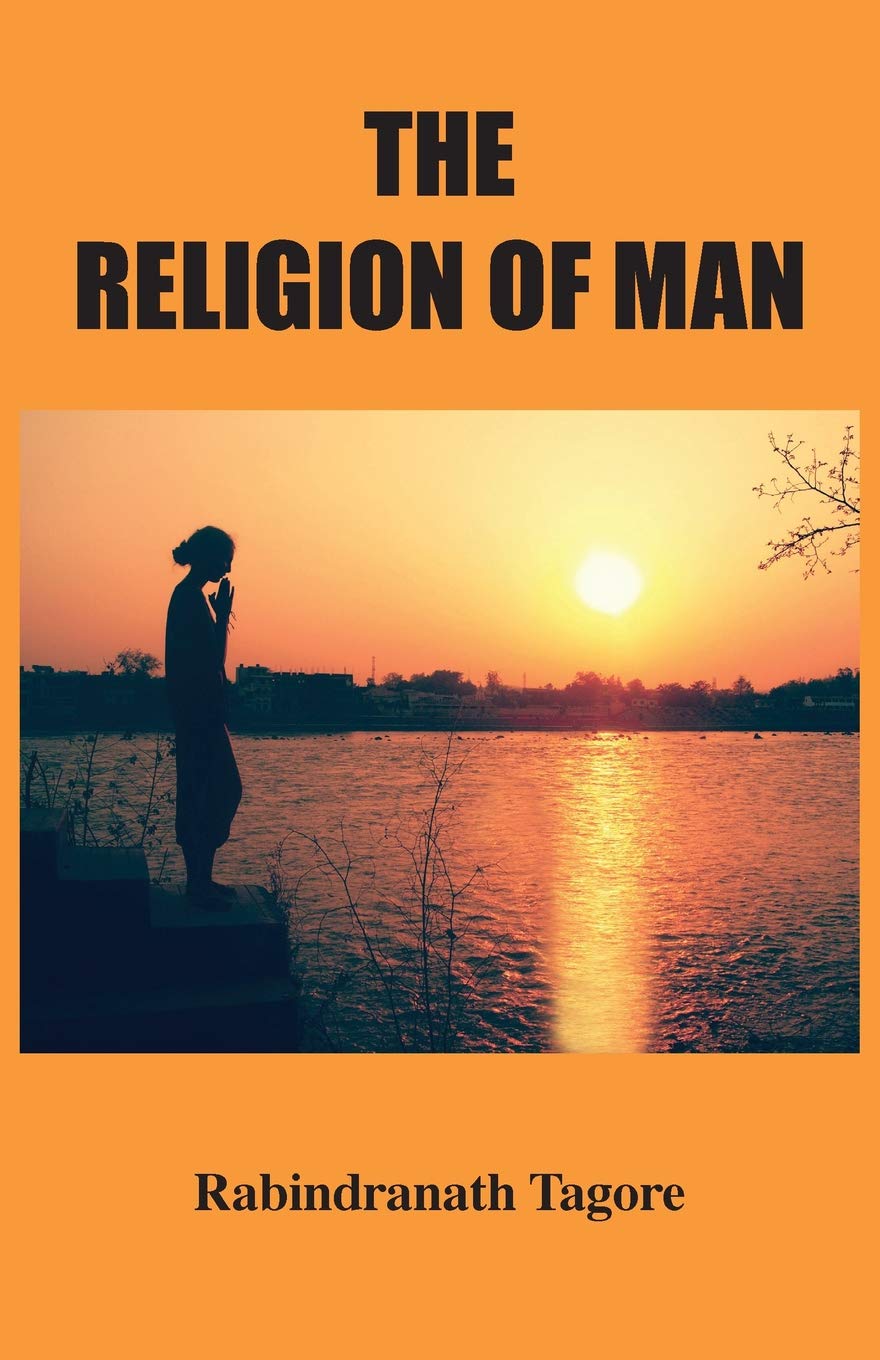
What she meant was that in the world (saṃsāra), we continuously pass from within one thing to another; we find it impossible to remain motionless. Things that engage my attention one moment vacate the mind in the next; my mind, too, passes beyond them. When my mind vacates the thing that it occupies, I die with respect to that thing. In this way I constantly pass from one death to another: there is no end to the series of deaths.
On the other hand, my mind desires something that it need not give up, possessing which leads it to say, “I need nothing more”, in other words, something that cannot conceivably be given up. If one comes to have it, one would escape death altogether. Where is the person or the thing about which we might say, “Here is the means of endless life; I need nothing further!”
This is why Maitreyī pushed aside the wealth given up by her husband, and exclaimed, “What do I need these for? I want amṛta.” Very well then; material things are not amṛta, but what then is amṛta? We know what it is. It‟s not as if we haven‟t tasted it in this world. If we hadn‟t, we wouldn‟t weep for it so. We seek it continually in all the things of this world, because it brushes against us from time to time.
Where amidst the mortal do we find the touch of amṛta? Where there is love. In love we
taste the infinite. Love is what renews the old by reflecting the boundless in bounded things; it is what refuses to accept death. The love that we encounter amid the myriad wonderful modes of saṃsāra, that which leads us to realise that His nature is love—when we seek this love in its entirety in a genuine aspiration of ātman, we can easily push away all materiality and declare: “yenāhaṃ nāmṛtā syām kimahaṃ tena kuryāṃ.”
How clear, how true, how sweet these words seem when uttered by a woman. It rings out with ease, eschewing all props of thought and all paraphernalia of logic. “I do not want home or hearth, my dear, I want love”—what a lament this is!
The prayer-mantra whose form was invoked from Maitreyī‟s simple tears—is there another prayer anywhere in the world that compares with those extraordinarily full verses? The supreme prayer of the human heart finds voice in the voice of this woman. This prayer is the prayer of each one of us; it is the prayer that has found utterance in every age of humankind‟s lengthy history.
“yenāhaṃ nāmṛtā syām kimahaṃ tena kuryāṃ”—immediately after these words had left her, did this brahma-vādinī rise up, hands joined in prayer and face streaming with tears, and look heavenward to say
asato mā sadgamaya tamaso mā jyotirgamaya mṛtyormāmṛtāṃ gamaya. āvirāvīrma edhi rudra yatte dakṣiṇaṃ mukhaṃ tena māṃ pāhi nityam.
In the Upaniṣads we come across numerous accounts of great spiritual insight recorded by men, but this deep prayer is delivered to us in the voice of a woman. The intense experience of want for what we lack is expressed quite simply as a call from the heart of a lovelorn woman.—O Truth, take me from all untruth into yourself, for otherwise our love should starve. O Radiance, take me from the close darkness into yourself, for otherwise our love should remain in chains. O amṛta, take me from ceaseless death into yourself, for otherwise our love should wander homeless in the shadow of looming night. O light, show yourself to me; only then shall my love find meaning. āvirāvīrma edhi—o āviḥ, o light, you who shine eternal, for once be mine, shine through me; let your radiance be complete in me. O Rudra, most terrible, you who are unbearable as the darkness of sin, as separation from the beloved, yatte dakṣiṇaṃ mukhaṃ: reveal to me your face softened with joy, your face of love. tena māṃ pāhi nityam: protect me with it, save me, save me for ever—may your expression of love, your joy save me for eternity.
tapasvinī Maitreyī, come, place your holy feet this day upon the hearts of those weighed down by materiality. Speak your prayer for amṛta within my heart in your deathless voice. May I be in no doubt concerning the path to eternal refuge.
First, a word on where those verses are plucked from, for they do not occur in that order in any Upaniṣad. Rabindranath is reading them off Brāhmadharmaḥ, the Brahmo liturgical text stitched together (some would say most unsatisfactorily) by his father, Debendranath Tagore.
In that text, they occur in Chapter XII, 109. The story of Maitreyī occurs in the Bṛhadāraṇyaka Upaniṣad, II: 4:1, ff. The verses that Rabindranath dubs “Maitreyī‟s prayer” are stitched together from Br. U., I: 3: 28, Aitareya U., śāntipāṭha (āvirāvīrma edhi), and Śvetāśvatara U., IV: 21 (second line only). So we immediately have two problems on hand: one, there is no prayer of the sort outside the Brahmo scripture, and two, there is no way to link Maitreyī with the alleged prayer! What do we do?
I suggest that we drop these problems in favour of making sense of what Rabindranath is saying. Let us begin with some opposing categories: lofty peak versus fragrant flower, grave voice versus tearful cry, logic versus sweet words. The irritating (and surely incorrect) associations with gender fade as soon as we internalize the lot, for each of these items marks a human capacity for becoming; other things being equal, these are qualities or states that each of us can and does manifest at different times. The second item in each pair indicates an understanding achieved rather than a seeking: as against a grave voice that seeks to dissect and analyse, a tearful cry of genuine anguish is born of a comprehensive understanding of what one lacks or has not yet attained. As against the Śākta or Śaiva image of the active feminine complementing the quiescent masculine, Rabindranath thinks of the organizing impulse, as well as organized states in human beings as having a feminine character. Of well-organized states it makes sense to say that their “beauty issues forth as light”. In a different essay, namely, “Tapobana” (Śāntiniketan IX: 2), he uses the term lakkhī (equivalent to the Sanskrit lakśmī) in an analogous way, i.e., to connote organization rather than randomness—a common enough use in the Bengali language. One might here also profitably think of the Dionysian and Apollonian impulses talked about in Nietzsche‟s earlier work. The Apollonian impulse would appear “feminine” from Rabindranath‟s perspective. Rabindranath himself is remarkably “feminine” to the extent that his efforts to assimilate seemingly disparate notions result in smooth, coherent pictures.
All such discrete capacities ought to be nurtured through careful education, as the text of Śāntiniketan indicates in various places. In the end, however, all dualities (or pluralities, speaking realistically) must make way for unity of purpose. In Maitreyī‟s case, the purpose is removal of vestiges of mortality, in the manner and sense sketched in the passage. There is no reason to suppose that other human purposes do not fit into this framework of ideas. An important theme of The Religion of Man is that human beings struggle to hear the call of their future states of being. This happens each time one formulates a project and pursues it with passion or diligence. Conceiving of a particularly difficult project for oneself, such as running a marathon, presupposes self-reflexivity, a prioritizing of values and a will to overcome challenges in the path of desired growth. One must accept one‟s blindness with respect to outcomes, and rely upon both the strength of one‟s resolve, and belief in (or love for) one‟s inchoate future self. For Rabindranath, the process of seeing through a project in this way is identical with becoming. It is one more step towards pūrṇatā or fullness, where fullness is opposed to relative lack (riktatā). Finally, our constant seeking to become—or, to vary the phrase, to come into our own without knowing in advance what we will be—is at the basis of human character and creativity. To this we might add the thought that there is a felt imperative to fashion ourselves and our lives‟ works, in spite of personal tragedy and often because of it. From this perspective, spiritual aspiration is simply another fascinating expression of our humanity. And therefore education is about bringing up a young person in ways that make her capable of entertaining and pursuing projects, both personal and communal/ social, to help her achieve her humanity in its myriad dimensions, in ever greater measure.
In view of these later developments in his thought, we note that Rabindranath‟s meditation upon “Maitreyī‟s prayer” is less than complete. (He realizes this fact, and returns to it a few more times in the remainder of Śāntiniketan.) But the seeds of his mature view of human nature and its possibilities are contained in this little piece. I have no wish to reduce the importance of a purely spiritual aspiration in the quoted passage; in particular, Rabindranath reads mṛtyormāmṛtāṃ gamaya as being straightforwardly about spiritual fulfilment—about attaining a love that would deliver one from death. One may have sympathy with this exalted desire of the human heart, or not. But it is important to emphasize that it is a human desire. In Rabindranath‟s world-view, the love that would make one “immortal” represents a human possibility, and I think it is incorrect to read him as not seriously believing in it. Accordingly, it would be incorrect to think of his views on education minus the consideration that some of us will have that particular aspiration. It is fair to say that this widens instead of narrowing the scope of his outlook on human nature.
References
1. One must doff one‟s hat to Christopher Nolan for visually representing this complex business, with some of the attendant passions, in the Hollywood film Interstellar. That might be the one time that Advaita lent itself smoothly to blockbuster treatment!
2. An echo of Rabindranath‟s later development of “Maitreyī‟s prayer” can be found in a prayer penned by his former faithbrother and contemporary, Vivekananda. I quote the Bengali, first: “…ār bala dinrāt, ‘he gaurināth, he jagadambe, āmāy manuṣyatva dāo; mā, āmār durbalatā, kāpuruṣatā dūr karo, āmāy mānuṣ karo.‟” (“…and say day and night, „o consort of Gauri, o mother of the universe, give me humanity; mother, remove my weakness and cowardice, make me human‟” (my translation). It appears to me that Vivekananda had worked out the humanist implications of Brahmoism nearly as well as Rabindranath. But that is a meditation for another time.
Indrani Bhattacharjee teaches philosophy at Azim Premji University, Bangalore. She is working on a book on Tagore’s philosophical views circa 1908-1913.

